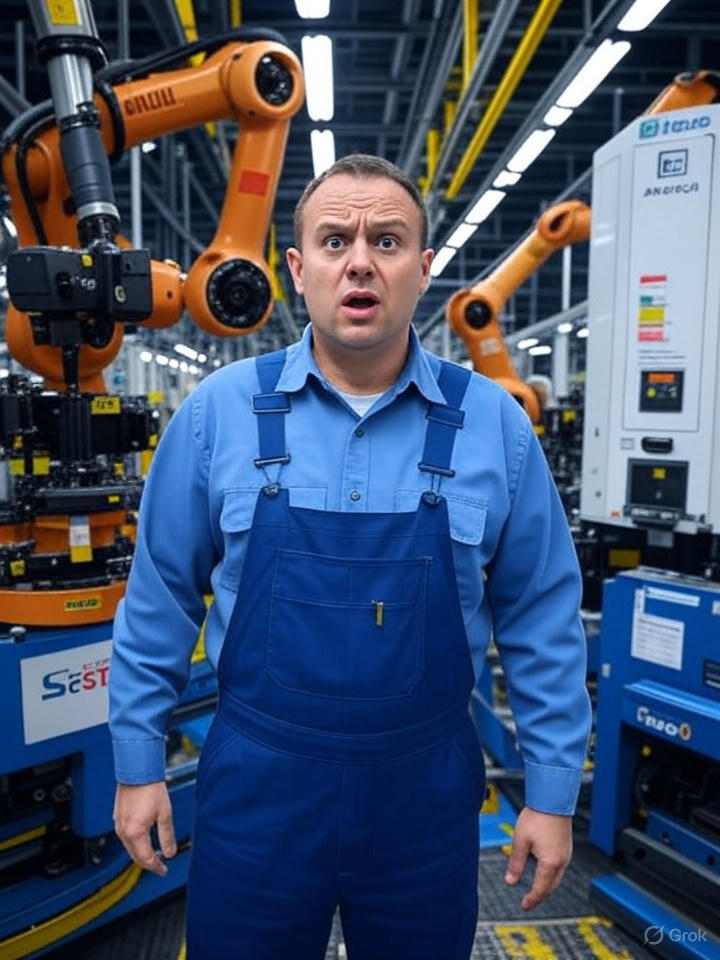How to Choose AI Cloud Platforms for Physical AI (2025)
Published:
Yo, what’s good? Welcome to my channel where we break down the tech you need to crush it in 2025! I’m Yong, and today we’re diving into something super exciting for robotics and Edge AI startups: picking the right AI cloud platform. Whether you’re building autonomous drones, warehouse robots, or running real-time AI on edge devices, you need a cloud that’s fast, affordable, and ready for your wild ideas. This is gonna be a 20-minute around deep dive, so grab a coffee, and let’s talk GPUs, latency, and why your choice of cloud can make or break your startup.
Section 1: Why AI Cloud Platforms Matter for Robotics
Alright, founders, let’s set the stage. Robotics and Edge AI aren’t your average app workloads. You’re dealing with physical AI—think real-time control for robot arms, vision inference for self-driving cars, or even on-device LLMs for a chatbot on a delivery bot. These workloads need serious compute power, crazy-low latency, and cloud platforms that don’t choke when you’re simulating a fleet of robots.
Why does the cloud matter? Because you’re not just training AI models—you’re deploying them on real hardware, in real time, maybe across the globe. You need GPUs that scream, edge compute that’s snappy, and pricing that doesn’t bankrupt your startup. Plus, if you’re in Europe, you’ve got GDPR breathing down your neck. So, we’re comparing the big dogs—AWS, Azure, Google Cloud—and some spicy up-and-comers like Nebius, CoreWeave, and Lambda. Let’s break it down!
Section 2: GPU and Accelerator Power
First up: raw compute power. If your robots are running vision models or training reinforcement learning, you need top-tier GPUs. Here’s the deal:
Here’s the kicker: specialized clouds like Nebius, CoreWeave, and Lambda often get new GPUs faster and at 30–50% lower cost than AWS or Azure. If you’re a startup burning through compute, that’s huge. Plus, all these platforms have fast interconnects like NVLink or InfiniBand for GPU clusters—think 3.2 terabits per second on Google’s A3 Ultra. Your models will fly!
Section 3: Latency and Edge Compute
Now, let’s talk latency. Think Figure AI, Boston Dynamics, or robot dogs. These machines don’t just process data — they move through the world. That means timing is everything. If a robot hesitates even 100 milliseconds before reacting, it could trip, fall, or crush something. So they need to think and act instantly.
That’s where Edge Inference comes in. Instead of sending sensor data to the cloud and waiting for a response, physical AI systems run their models locally — right inside the robot.
They typically use powerful edge chips like NVIDIA Jetson Orin, or even custom AI chips.
Latency? We’re talking 10 to 30 milliseconds— fast enough for things like walking, grabbing objects, or balancing.
Cloud just can’t compete with that kind of speed when milliseconds matter.
Tesla does all the inference locally using its own chips — first with NVIDIA, and now with their in-house FSD chip and the new Dojo supercomputer for training.
Why? Because if you’re driving at 60 mph, you can’t wait for a server in Oregon to tell you to brake. That round trip to the cloud? It’s hundreds of milliseconds, maybe a second — way too slow. Tesla uploads massive amounts of driving footage to the cloud for labeling and training new models. Same with Figure AI or Boston Dynamics — they might use the cloud to improve models, push updates, or run analytics — but not for real-time decision-making.
You just can’t trust the cloud with your balance, your brake pedal, or your robot’s next step.
Cloud AI — AWS, Azure, Google Cloud — is absolutely essential, but mostly for training and post-processing.
Section 4: Pricing—Don’t Get Burned
Alright, let’s talk money. Cloud compute can eat your budget faster than a swarm of delivery bots. Here’s the pricing lowdown:
Here’s the hack: process data at the edge or in-region to cut egress costs. And always, always lock in reserved instances or committed contracts for big savings—especially with Nebius or CoreWeave.
Section 5: Regional Coverage and Compliance
If you’re operating in the US or Europe, data sovereignty is a big deal. Nobody wants a lawsuit over GDPR. Here’s the scoop:
The datacenter allocation worldwide
Hyperscalers like AWS, Azure, and Google Cloud are your safe bet for global coverage and compliance. Nebius and CoreWeave are awesome for EU startups, but Lambda needs a bit more diligence.
Section 6: Robotics Tools and Developer Goodies
Now, the fun part: tools and ecosystems. You want a cloud that makes building robots easy, right?
The hyperscalers win for robotics-specific tools and community support. But if you’re a lean startup with a custom ML pipeline, Nebius or Lambda’s raw compute might be your vibe.
Section 7: How to Choose
So, how do you pick? It’s all about trade-offs:
My advice? Prototype on a specialized cloud like Lambda for cheap compute, then scale with AWS or Azure for their robotics tools and edge options. And don’t sleep on startup credits—$100k–350k can go a long way!
And that’s the rundown, founders! Building a robotics or Edge AI startup in 2025 is all about picking the right cloud to match your tech and budget. Whether it’s AWS’s RoboMaker, Nebius’s cheap GPUs, or Google’s TPUs, you’ve got options. Drop a comment with your favorite cloud platform or any questions—I read ‘em all! If you found this helpful, smash that like button, subscribe, and ring the bell for more startup tech tips. Let’s keep building the future—see you in the next one!


